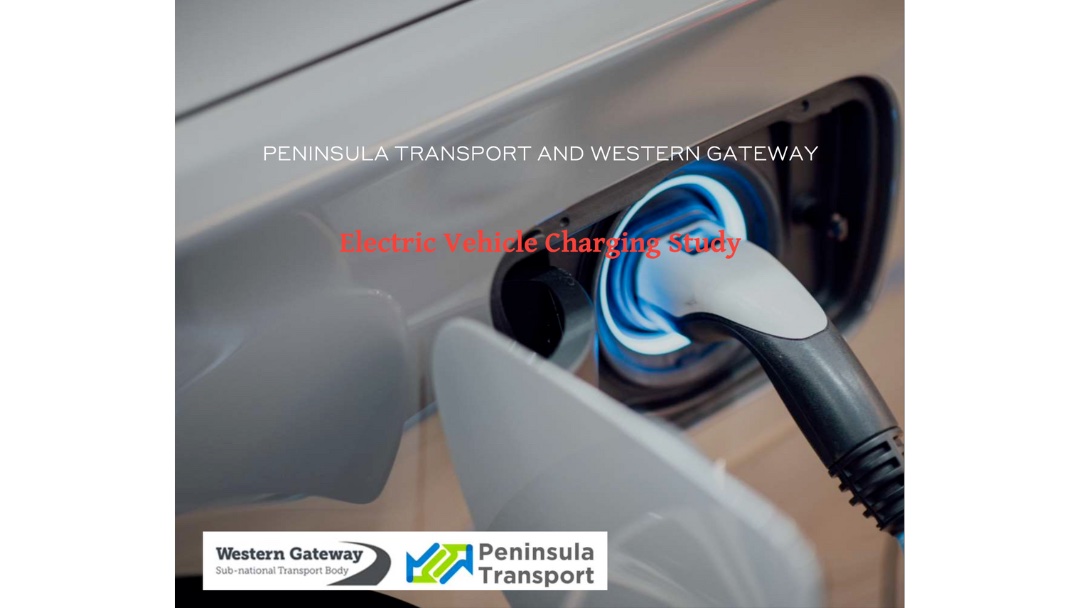Western Gateway and Peninsula Transport Sub-national Transport Bodies have jointly published an Electric Vehicle Charging Study, to help local authorities plan for EV uptake and identify potential charge point sites.
The study forecasts how quickly electric vehicle (EV) uptake is expected to grow in the South West up to 2050, with additional short-term focus up to 2030. WSP, who were commissioned for this study, drew evidence into a useful and simple tool to predict where, how many and what type of chargers will be required.
Across the South West region there are currently 2,408 charge points. By 2030, it is forecasted that up to 33,600 publicly accessible charge points could be required. These charge points would be provided by both the public and private sector, with the public sector expected to deliver up to 20,000 charge points across the South West by 2030. There is potential for additional demand during the busy summer months due to the influx of visitors to the region that will also need addressing.
The data in the study has been shared with local authorities to provide an indication of where charge points should be located and what types of charger should be installed. This will support local authorities in their Local EV Infrastructure (LEVI) delivery programmes, following the Department for Transport’s announcement of a national £343m LEVI Fund to help local authorities address the need for public electric vehicle charging.
The next step will be to create an easy-to-use interactive dashboard to provide a spatial visualisation of EV uptake and charge point demand, as well as setting up a South West EV forum and developing a regional EV strategy.
Allan Creedy, STB Liaison and Partnership Lead, Western Gateway STB, said: “Our joint EV Charging Study provides the evidence we need to determine our requirements for EV uptake in the South West. It assesses barriers to uptake including land use and grid capacity, anticipates consumer behaviour and addresses the issues specific to our region, such as tourism and seasonal changes in charging demand. Now we look forward to establishing a South West EV charging infrastructure forum to engage more widely with stakeholders to address these strategic issues.
“Demand for charging is not equally distributed across our region. It is important to understand where charge points would be most beneficial and to focus investment in these areas. This important study provides an evidence base to support future EV charging across the South West, helping our local authorities within the Peninsula and Western Gateway areas inform the planning of their EV charging networks and creation of their EV strategies.”
Councillor Andrea Davis, Peninsula Transport Chairman said: “The number of electric vehicles being used across the region is rising rapidly. It is vital that the number of public charge points keeps pace with this rise to make sure everyone using an electric vehicle can travel around the peninsula with the confidence of being able to top up when needed.
“Demand fluctuates significantly across the region as we have both urban and rural areas to consider. We also see an influx of visitors during our summer months which places extra demands on the charging network. This modelling will support local authorities in the planning of public charging networks, making sure chargers are best placed where drivers need them. Already, these findings have played a vital role – for example, in shaping Cornwall’s EV infrastructure strategy. This will, in turn, help to support applications for LEVI funding across the region.
“Electric vehicles, when combined with better connected public transport, and more options for people to walk and cycle easily and safely will be key to significantly reducing carbon emissions and improving air quality.”

